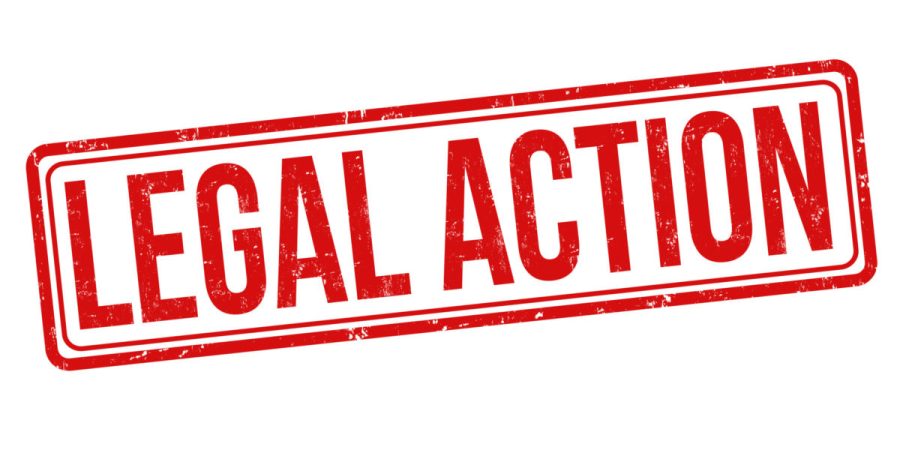Business-related lawsuits are a dime a dozen in Singapore. Your client could sue you for mistakes made in your work. Your business partner could you sue you over a disagreement. Your shareholders could sue you for mismanaging the company. Even your own employees can sue you for employment disputes, or harassment. Legal action can be taken against you from almost any source. It’s vital that, as a business owner, you know how to protect yourself. A firm understanding of legal processes, a trusted lawyer, and a good lawsuit insurance policy are vital to defending your interests.
This is Lawsuit MMA 101. Class is in session.
Summary of the 9 steps to defend a lawsuit:
- Receive Letter of Demand from plaintiff
- Receive Writ of Summons from plaintiff
- Respond to Writ of Summons
- Serve a Defence pleading
- Begin Discovery process
- Begin Pre-Trial Conference
- Go to Trial
- Judgement passed
- Appeal
9 Steps To Defending a Lawsuit in Singapore | ||
| Step | Action | Timeline |
| 1 | Receive Letter of Demand and respond | When you fail to amicably resolve differences with the other party |
| 2 | Receive Writ of Summons | When you fail to comply with the Letter of Demand by the deadline. Could be days/weeks/months after the Letter of Demand is sen9 |
| 3 | Respond to Writ of Summons
Either: · Accept the other party’s demands, or · File a Memorandum of Appearance | Within 8 days of receiving Writ of Summons |
| 4 | Serve a Defence Pleading | Within 14 days of filing Memorandum of Appearance |
| 5 | Begin Discovery | Lawyers will file summons/affidavits with Courts for discovery |
| 6 | Attend Pre-Trial Conference (PTC) | Court will schedule a date. Usually within 2 months after the filing of Writ of Summons, or Memorandum of Appearance. |
| 7 | Go to trial | Trial will usually start within 28 days of the PTC.
Depending on case complexity, trials can go on for several months to many years. |
| 8 | Judgement | Judgement is handed down when trial is concluded. Could be months or years after you first get involved in the lawsuit. |
| 9 | Appeal (if you have a case to do so) | Depending on case complexity, could take months or years for cases to be re-heard and resolved. |
#1. You’ll be served a Letter of Demand
Before a lawsuit begins, the plaintiff (the party initiating the legal complaint) will often serve you a Letter of Demand first. A Letter of Demand lists out all of the plaintiff’s demands, and the reasons for these demands. For instance, if the plaintiff feels you didn’t comply with a contract you signed with them, a Letter of Demand might call for you to fulfill the terms of your contract.
It is not compulsory for a Letter of Demand to be first sent to you. However, it does allow the plaintiff, and you (the defendant) to resolve matters relatively more amicably, without going to trial. Court trials are long, tiring, and costly. A Letter of Demand gives you a final opportunity to resolve differences, before legal proceedings begin. If you wish to avoid a costly trial, you can speak with the plaintiff at this stage to negotiate some kind of settlement. Alternatively, if the claim amount is small and/or you know you’re at fault, you can choose to agree to the Letter’s demands.
If you don’t comply with the Letter of Demand’s terms, or reach a mutual settlement, the next step is to sue you in court. Saddle up and get your wallet out, because things are about to get very expensive.
#2. You’ll have a Writ of Summons filed against you
The plaintiff will file a Writ of Summons with the Singapore Courts. A Writ of Summons is a legal document which is used to commence legal proceedings.
Service of Writ
The Writ will be personally delivered (“served”, in legal terminology) to your lawyer, or yourself. It will be served as a physical letter. It will be delivered either by the plaintiff’s lawyer, legal assistant, or a court process server. Once the Writ is delivered to you, the lawsuit is considered to have officially begun. If the plaintiff cannot locate your lawyer or you after 2 attempts, they can then apply to the Courts to serve the Writ via email, either to your lawyer or yourself.
The Writ will be served to you within 6 months of the Court’s issuance of the Writ. If you are overseas, the plaintiff will have up to 12 months to serve you the Writ.
Statement of Claim
The Writ of Summons is usually served together with a Statement of Claim. This document essentially identifies the relevant parties in the case, lays out the facts of the case, and will state what compensation/damages are being sought.
The Statement of Claim generally contains the following information:
- Identity of plaintiffs and defendants,
- Relationship between plaintiffs and defendants,
- Legal obligations which the defendants have breached,
- Facts of the defendants’ wrongdoings,
- Plaintiffs’ losses that were caused by defendants’ wrongdoing,
- Compensation sought by the plaintiffs,
Court Jurisdiction
Singapore has several different Courts. The specific Court that will hear your case will depend primarily on the dollar-value that is being claimed against you (amongst other factors).
Here’s a breakdown the various Courts that you can be sued in:
| Claim amount (SGD) | Court which will hear your case |
| Up to $20,000 Up to $30,000, only if both plaintiff and defendant agree | Small Claims Tribunal
|
| $60,000 and under | Magistrate’s Court |
| Above $60,000, and under $250,000
For personal injury claims only, stemming from road traffic or industrial activity accidents: Up to $500,000 | District Court |
| $250,000 and above | High Court |
Time limits for the plaintiff to sue you
There are different time limits (called “statutes of limitation”), depending on the type of legal claim being made. The plaintiff can initiate legal action against you within these time frames. Time limits are provided for under the Limitation Act.
Here are some examples of time limits:
| Type of legal action | Time limit |
| Contractual claims | 6 years |
| Tort claims | 6 years |
| Small claims court cases | 2 years |
| Personal injury claims | 3 years |
| Wrongful act causing death claims | 3 years |
#3. Respond to the Writ of Summons
The moment that Writ of Summons lands on your desk, you must act rapidly to defend yourself. Immediately seek out a qualified lawyer whom you trust. A good lawyer will advise you on the best course of action. They will evaluate whether the plaintiff’s lawsuit is strong or weak, what kind of defence you can mount, and whether you can potentially counter-sue the plaintiff.
File a Memorandum of Appearance
If, after consultation with your lawyer, you believe you have a strong case, you can contest the Writ of Summons. Your lawyer will file a Memorandum of Appearance within 8 days of receiving the Writ of Summons and Statement of Claim. Yes – you only have slightly more than a week to respond! (So, lawyer up ASAP).
If you don’t file your Memorandum of Appearance by this deadline, the Court may pass down a default judgement. This means you might not have the chance to present your side of the case at all, and you could stand to lose the case with highly unfavourable rulings passed against you. The Court will decide on the amount of damages you must pay to the plaintiff.
Trial vs Settlement
One of the most important decisions you’ll make is whether to take the case to trial, or negotiate a settlement. Most people may have an emotional reaction when they first become aware that they’re being sued. It’s common for defendants to think to themselves: “I’ll sue them back! See them in court!” You should not allow emotion to cloud your judgement. Approach the issue in a calm, level-headed manner.
Going to trial may not always be the best move. Court cases have less predictability than settlements, since it’s up to the judge to make the final ruling. Even if you have a strong case, it’s not an iron-clad guarantee that you’ll win. Also, going to trial is very costly and time consuming. You’ll spend a lot of money on legal fees. This could easily be hundreds of thousands, or millions. You’ll have to set aside time from work to spend long days in court. It’s also likely that the trial will suck up a lot of your mental energy.
Here are the alternatives to a court trial:
- If the claim is small, you can consider accepting the plaintiff’s claim against you. You can accept their terms, and have the case wrapped up. Try to see this as the lesser of two evils – the bigger evil being a big, costly lawsuit. For small claims, this option may end up costing you less than hiring a lawyer.
- You can also negotiate with the plaintiff to arrive at a settlement. Throughout the entire process, you have the option to come to a settlement with them. If both parties can agree to a set of terms, the case can be settled without taking the trial any further. If you can reach an agreement, your lawyers will inform the Court. The lawsuit will then be dropped, and you won’t have to continue contributing to the retirement funds of your lawyers.
An experienced legal professional will be able to advise you on whether a trial or settlement is the better approach.
What happens if I ignore the Writ of Summons?
Unfortunately, the Writ of Summons is a legal document. Just like those dirty dishes in your sink, ignoring it won’t magically make the problem go away.
If you don’t respond to the Writ of Summons, the plaintiff can apply to the Court for a default judgement against you. This means that you, as the defendant, will have no chance to present your case. The Court will decide the outcome. This is not recommended, since you could face a judgement that is highly unfavourable.
A default judgement will allow the plaintiff to take various actions against you. This may lead to disastrous situations like your monthly salary being garnished (i.e. the plaintiff has the power to take a % of your salary), your house, car and other belongings can be seized and sold. If the claim amount exceeds the value of your personal assets, plaintiffs can even file a motion to have you made a bankrupt. Don’t be a sitting duck and leave yourself exposed to a default judgement!
#4. Serve a Defence Pleading
After you serve your Memorandum of Appearance, you have 14 days to serve a Defence pleading on the plaintiff. Your lawyer will do this for you. If you go past this 14-day window, the plaintiff can move to file a default judgement against you.
The Defence pleading lays out arguments for why you are not liable for the claims being made against you.
Counterclaim (i.e. counter sue)
You can also file a Counterclaim if you have a legal claim against the plaintiff. This is commonly known as counter-suing the other party. Your lawyer will file this together with your Defence pleading.
The plaintiff will have the ability to file a reply to your defence pleading. They will also be able to file a reply to your counterclaim. They have up to 14 days after you file your defence/counterclaim to do so.
#5. Start Pre-Trial Conference (PTC)
After your Defence pleading and the plaintiff’s Reply has been entered, you’ll enter the Pre-Trial Conference phase.
The PTC session is usually arranged within 2 months from the date that the Writ of Summons was served, or the date that Memorandum of Appearance was filed.
A judge will chair the PTC. They will ask for updates on the legal proceedings, and evaluate the case. The judge will evaluate whether the dispute can be resolve via a settlement, or whether a trial is absolutely necessary. If a settlement is reached at the PTC phase, the legal proceedings will stop. If the judge determines that the case cannot be resolved via a settlement, then they may set a date for trial.
Your trial will generally start within 28 days after the PTC.
#6. Getting ready for trial
Getting ready for trial is a highly time-consuming and complex process. During the pre-trial preparations, your lawyers will be filing one or more interlocutory applications. An interlocutory application is a request for the Court to compel the other party to perform certain actions, such as provide access to documents, or to call for witnesses.
Some common interlocutory applications are:
- Discovery: This is one of the most important aspects while preparing for trial. Discovery is the process where both parties disclose relevant documents and other evidence. This will help both sides build their case. Remember that discovery is a double-edged sword. It can expose important evidence that your lawyers can use against the other side, but it can also expose evidence that your opponent can use against you.
- Amendments: If submitted documents need to be edited, your lawyers will file an amendment request.
- Subpoenas: This compels witnesses to attend the trial and testify. It is legally compulsory for subpoenaed individuals to attend court.
- Mareva Injunction: This freezes the other party’s assets. Assets can be local or foreign. It prevents the other party from selling the assets in order to avoid paying the plaintiff.
- Anton Piller Order: This allows permitted individuals to enter the other party’s premises to search and seize evidence. This prevents the other party from destroying incriminating evidence.
- Security for costs: This compels the plaintiff to put up a security deposit for court costs. This ensures greater financial security for parties involved in the suit, if the Plaintiff doesn’t win the case.
- Interlocutory injunction: Prevents the other party from taking certain actions. For example, if you are being sued for defamation, the plaintiff may file an interlocutory injunction to have you stop making defamatory statements about the plaintiff until the end of the trial.
#7. Begin trial
The battle begins. The plaintiff’s lawyers will usually kick off the trial by presenting their case. The plaintiff will present their witnesses. Your lawyers will then have the opportunity to cross-examine each of the plaintiff’s witnesses. Your lawyers will then call for your witnesses to testify. The plaintiff’s lawyers will in turn cross-examine your witnesses. After both parties have provided their evidence, both sides’ lawyers will present their closing submissions.
Depending on the complexity of the case, the trial itself can be concluded the same day, or take several days or weeks for particularly large cases.
#8. Judgement and enforcement
The judge can pass a decision immediately after the trial. Alternatively, the judge can call for an adjournment, if the Court needs more time to decide on a judgement.
The judge may decide that you must pay all, or a portion, of the all legal cost incurred by both parties.
If you lose the case, you will probably be ordered to pay damages to the plaintiff, and/or to pay additional damages to the plaintiff.
If you don’t have the money or are unwilling to pay these costs, then the plaintiff can apply to the Courts to enforce the judgement against you. Here are some common ways that Courts can enforce their judgements:
Examination of a Judgement Debtor:
The Court will compel you to provide information on your assets. The Court will use this information to assess the best way to compensate the winning party. If you don’t provide this information, you can face prison time.
Writ of Seizure and Sale:
The plaintiff can apply to the Court for a Writ of Seizure and Sale. Yes, that Writ does exactly what it sounds like. This is a legal document empowering Court bailiffs to seize your assets, and then sell them off at auction to pay the plaintiff their damages.
Under the Subordinate Courts Act, Court bailiffs have the power to enter your home without your permission. They are allowed to break doors or windows to gain entry.
Garnishee Proceedings:
The plaintiff can apply to the Court for Garnishee Proceedings. This allows them to gain access to your bank account.
If you can’t pay the damages assessed against you, the plaintiff can apply for a bankrtupcy order against you. You can also declare yourself as a bankrupt.
#8. Appeal the judgement (if applicable)
Appeals are only available if there are legal grounds to do so. Speak with your lawyer to determine whether there is legal case for an appeal. You cannot file an appeal simply because you don’t agree with the Court’s decision, or you want to get a second hearing. For claims under $60,000, you can only appeal if you apply for permission to the Court, and the Court accepts your submission.
Protect yourself from lawsuits
As you can probably tell by now, lawsuits are incredibly expensive. Getting sued is such a risky proposition. You could lose your personal assets if you can’t pay for the lawsuit and damages! That’s why it’s vitally important that you carry Professional Indemnity Insurance. Professional Indemnity covers you against a really wide variety of lawsuits.
Professional Indemnity policy covers:
- Lawsuits from negligence, errors, & omissions in your work or advice you provide
- Lawsuits from defamation
- Lawsuits from breach of confidentiality
- Lawsuits from IP infringement
- Automatic cover for subsidiaries
- …and more
Get Professional Indemnity Insurance from $42/month – lowest prices in Singapore



